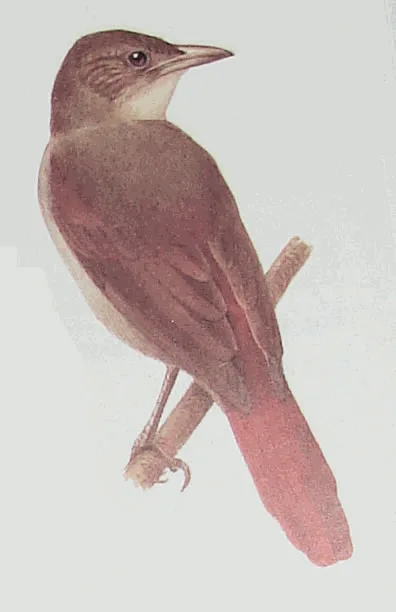
Olive-backed Foliage-gleaner
[order] Passeriformes | [family] Furnariidae | [latin] Automolus infuscatus | [UK] Olive-backed Foliage-Gleaner | [FR] Anabate olivatre | [DE] Olivrucken-Baumspaher | [ES] Trepamusgo Olivo | [IT] Spigolafoglie dorso oliva | [NL] Olijfrugbladspeurder
Subspecies
| Genus | Species | subspecies | Breeding Range | Breeding Range 2 | Non Breeding Range |
| Automolus | infuscatus | SA | w,n Amazonia | ||
| Automolus | infuscatus | badius | |||
| Automolus | infuscatus | cervicalis | |||
| Automolus | infuscatus | infuscatus | |||
| Automolus | infuscatus | purusianus |
Physical charateristics
Head, back and wings olive brown. Tail rufous. feathers around the eyes whitish with black tips. Chin and troath whitish, breast and belly olive whitish yellow, flanks olive.
Listen to the sound of Olive-backed Foliage-Gleaner
[audio:http://www.aviflevoland.nl/sounddb/O/Olive-backed Foliage-Gleaner.mp3]
Copyright remark: Most sounds derived from xeno-canto
| wingspan min.: | 0 | cm | wingspan max.: | 0 | cm |
| size min.: | 18 | cm | size max.: | 19 | cm |
| incubation min.: | 0 | days | incubation max.: | 0 | days |
| fledging min.: | 0 | days | fledging max.: | 0 | days |
| broods: | 0 | eggs min.: | 0 | ||
| eggs max.: | 0 |
Range
Found in Bolivia, Brazil, Colombia, Ecuador, Peru, Venezuela and the Guianas. In Suriname uncommon but widespread in the forests of the interior.
Habitat
Tropical evergreen forests, mainly terra firme and transitional forest.
Reproduction
Nest is a shallow cup of plant fibre, placed in a chamber at the end of a tunnel (200 cm) excavated in a dirt bank. No further data.
Feeding habits
Hunts for insects and small vertebrates in dense understorey and subcanopy. Forages in pairs or in mixed flocks by gleaning prey from mostly dead leafs.
Conservation
This species has a large range, with an estimated global extent of occurrence of 6,000,000 km2. The global population size has not been quantified, but it is believed to be large as the species is described as ‘common’ in at least parts of its range (Stotz et al. 1996). Global population trends have not been quantified, but the species is not believed to approach the thresholds for the population decline criterion of the IUCN Red List (i.e., declining more than 30% in ten years or three generations). For these reasons, the species is evaluated as Least Concern.

Migration
Sedentary throughout range.
Distribution map

]]>
